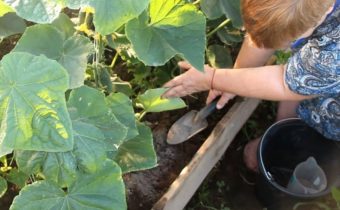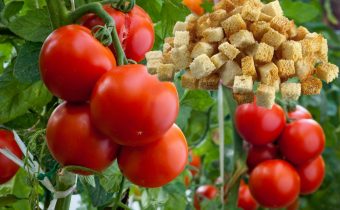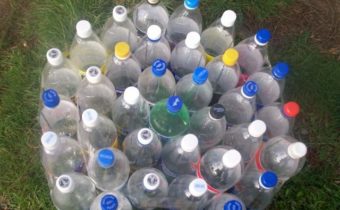What happens if you feed the tomatoes with bread
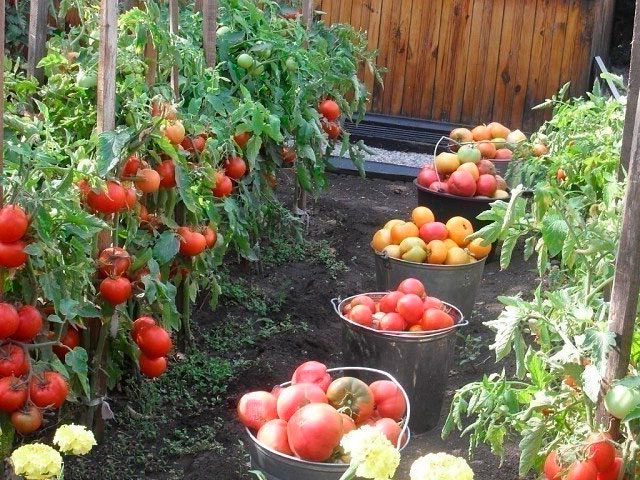
Top-dressing from bread is a quick and affordable way to saturate tomatoes with vitamins and trace elements. Its nutritional value is not worse than that of synthetic fertilizer. You can apply throughout the growing season of the plants. For grain sourdough gardeners use black, rye and white bread.
The secret and benefits of bread manure
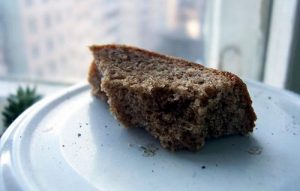 The secret to the effectiveness of bread manure is yeast, which is part of the baking. Biologically active beneficial bacteria are a catalyst in the development of living organisms. Yeast is a plant growth stimulant. The positive effect of the introduction of grain feeding will be only when it is properly prepared and made in a timely manner.
The secret to the effectiveness of bread manure is yeast, which is part of the baking. Biologically active beneficial bacteria are a catalyst in the development of living organisms. Yeast is a plant growth stimulant. The positive effect of the introduction of grain feeding will be only when it is properly prepared and made in a timely manner.
The benefits of grain feeding:
- It activates the growth of plants in 2-3 days after application to the soil.
- Increases resistance to disease and adverse weather conditions.
- Promotes the formation of a strong root system.
- Increases plant fertility.
- Increases the taste of grown fruits.
After fertilizing the soil, the yeast bacteria begin to interact with the organic substances of the soil, processing them and releasing nitrogen and other nutrients.
Bread dressing needs to be applied with potassium fertilizer. The fact is that during the processing of organic substances, the bacteria feed on potassium, thereby depleting the soil. Therefore, along with the sourdough grain, add ash wood.
Bread as a fertilizer for plants
You can feed not all plants in a row. Some respond to the introduction of bread sourdough positively, while others may simply die. Which plants can be fertilized and which ones are not?
The “bread lovers” include: cucumbers, tomatoes, eggplants, carrots, strawberries, strawberries, flower crops, melons, peppers. Feed can root and foliar way.
- Fertilize cucumbers, melons, strawberries during budding, flowering, fruit formation. The frequency of feeding is 15-20 days. You can add leaven until autumn, while the plant is bearing fruit.
- Tomatoes, peppers, eggplants, fertilize and on the garden or in the greenhouse, at least three times. The first, when the ovary begins to form, the second and third, during fruiting, with an interval of 10-15 days.
- Flower crops are fed several times per season. The first introduction of nutrients is carried out in spring in order to activate their growth and accelerate the formation of green mass. The second time the fertilizer is applied before flowering.
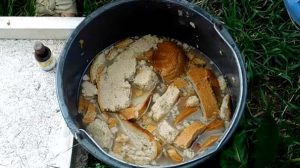 At the same time, top-dressing on the basis of bread has a negative effect on the state: garlic, potatoes, onions, and also sick plants. Vegetable crops begin to actively develop green mass, but in no way does fertilizer affect the development of fruits.
At the same time, top-dressing on the basis of bread has a negative effect on the state: garlic, potatoes, onions, and also sick plants. Vegetable crops begin to actively develop green mass, but in no way does fertilizer affect the development of fruits.
Top dressing tomato bread
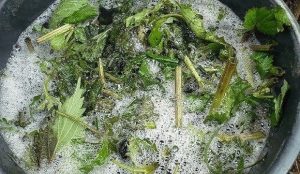 Top dressing with bread allows you to get a rich and tasty harvest. Tomatoes respond to fertilizer very well. Yield after making bread sourdough increases by 25%.
Top dressing with bread allows you to get a rich and tasty harvest. Tomatoes respond to fertilizer very well. Yield after making bread sourdough increases by 25%.
Remember the basic rules of fertilizer:
- In order for the bread sourdough to start acting, it needs to be brought only into well-warmed soil. Therefore, the effect of feeding will be only in summer or in a well-heated greenhouse;
- watering tomatoes is necessary only before the fruiting of tomatoes, after not recommended;
- before making the starter, you need to water the plants so that the root system more actively absorbs the nutrients;
- to enhance the effect of bread infusion, add wood ash or egg shells, ground into powder;
- during the season it is recommended to apply top dressing 2-3 times;
- fertilizing is recommended at the root in the evening, when the soil is still warm, and the sun is already setting and evaporation from the soil is not as active.
Fertilizers from seedling bread
After sprouting, tomatoes require nutrients that would enhance their growth. The ideal at this stage is the bread dressing. Ferment is recommended for 20 days after seed entry.
Sourdough "Black rusk"
 The infusion is prepared on the basis of black bread and warm water. In half a bucket of water, with a temperature of 25-30 ° C., place 2 kilograms of black bread. Cover the top with a lid or a plate, put the load so that the bread does not pop up. Leave the leaven for 7 days to ferment. After that, strain the solution through a sieve or cheesecloth, dilute with three liters of warm water. Water the seedlings at the root.
The infusion is prepared on the basis of black bread and warm water. In half a bucket of water, with a temperature of 25-30 ° C., place 2 kilograms of black bread. Cover the top with a lid or a plate, put the load so that the bread does not pop up. Leave the leaven for 7 days to ferment. After that, strain the solution through a sieve or cheesecloth, dilute with three liters of warm water. Water the seedlings at the root.
Infusion "Natural"
Saturate all the nutrients will allow the mixture based on fresh mullein, bread and hay. In a bucket, place 3 kilograms of mullein, 2 kilograms of crushed bread into cubes, fill the rest with hay, cover with warm water. Leave it for 14 days. On the fifteenth day, strain the swill. Then, dilute one liter of the mixture in 10 liters of warm water, water the seedlings of 0.5 liters per bush.
Do not be afraid of the sharp smell of the infusion on the bread and the fact that it is missing. A pungent odor occurs due to the fermentation process and the release of gases of different nature. So it should be, it means that you did everything right.
Top dressing during budding and flowering
To increase the fruiting of tomatoes, one top-dressing of grain sourdough will be insufficient. Still need to fertilize plants during budding and flowering. This will increase the number of ovaries and taste characteristics of the fruit. For fertilizer, use the following recipes for making infusions on bread.
Sourdough "Bread and nettle"
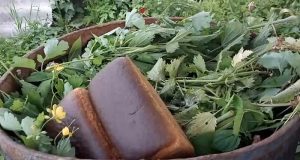 In equal proportion fill the bucket with crushed breadcrumbs from black or white bread, and with fresh nettles, cover with warm water. For oppression, on the ingredients, put a bottle of water. Leave the mixture for a week to infuse. After 7 days, swill strain. Dilute the resulting starter with water. On a bucket of warm water will need 2 liters of "bread-nettle" infusion.
In equal proportion fill the bucket with crushed breadcrumbs from black or white bread, and with fresh nettles, cover with warm water. For oppression, on the ingredients, put a bottle of water. Leave the mixture for a week to infuse. After 7 days, swill strain. Dilute the resulting starter with water. On a bucket of warm water will need 2 liters of "bread-nettle" infusion.
Infusion "Budget"
To prepare the infusion, you do not need to use fresh bread. As a basis, take the crusts and crackers that can be collected during the winter and spring. The bread becomes stale fast enough so that it is not thrown into the garbage can, cut it into breadcrumbs and store until summer, then to prepare a nutritious food.
Put the collected rusks in a bucket, cover with warm water. Insist under the yoke so that the dry bread does not pop up and is not covered with mold. A ferment infusion should be at least 4 days in a warm place. A sign of readiness means is the complete absence of white foam. The next step, before using the infusion, is to strain the cake and dilute the solution with warm water one to one.
Reviews
Of the many reviews in various forums, bread sourdough is among the top 5 best natural fertilizers. In addition to bread, some gardeners also add old jam or granulated sugar to the sourdough. Sweetness speeds up the fermentation process, and the infusion is faster. Also, gardeners recommend to ferment bread with various fresh herbs, then the yeast turns out to be “mega nutritious” and the vegetables grow like on yeast. As a basis, gardeners use illiquid bread, completely stale and even covered with mold.Note that this in no way affects the result. After all, the main thing is the yeast, which is stored in baking.


